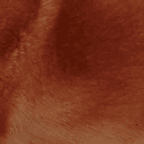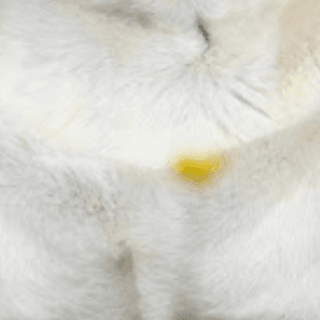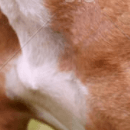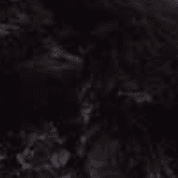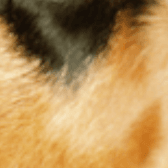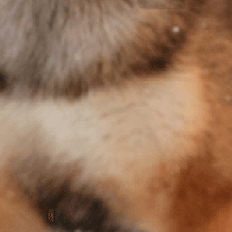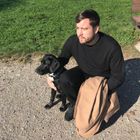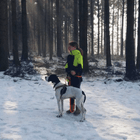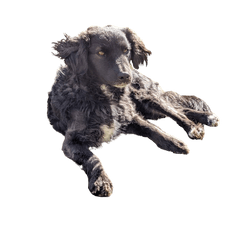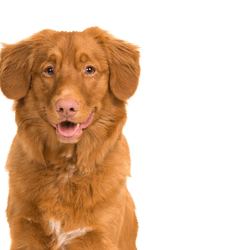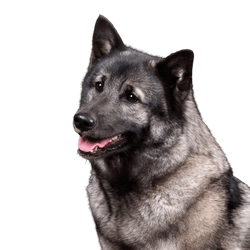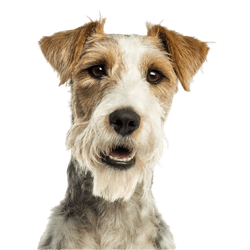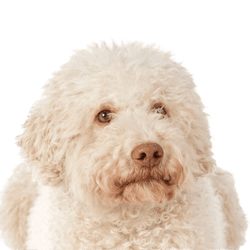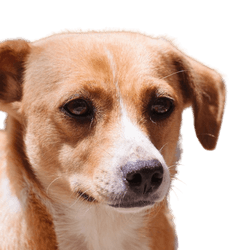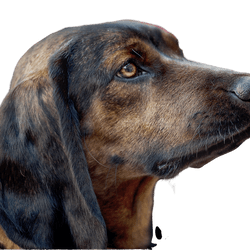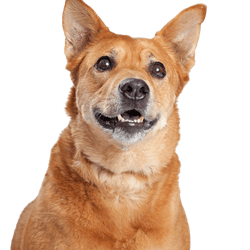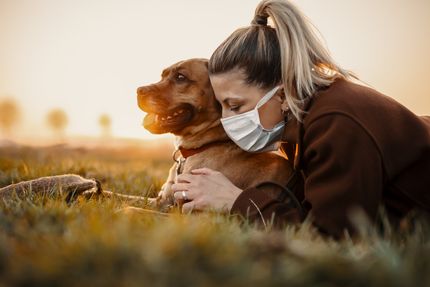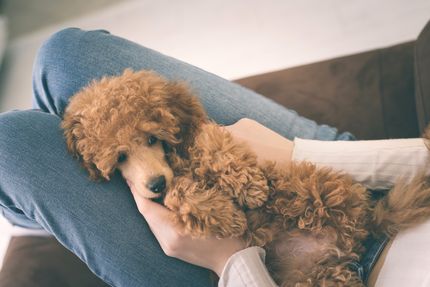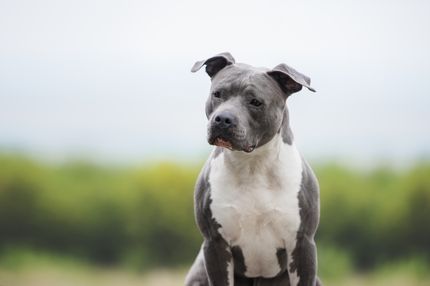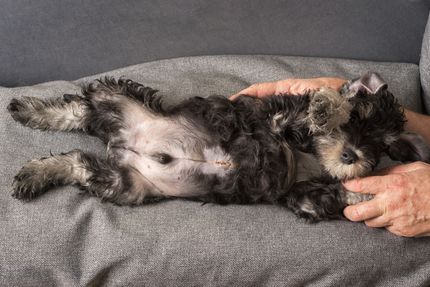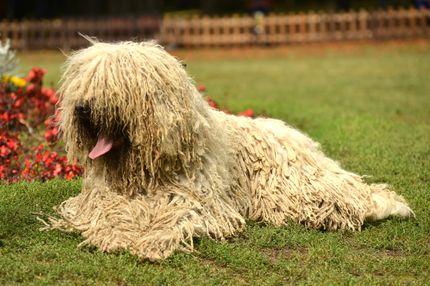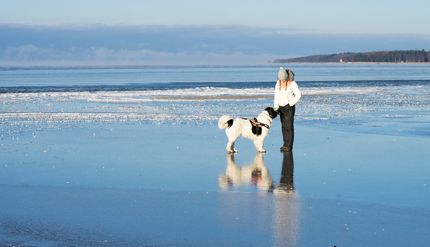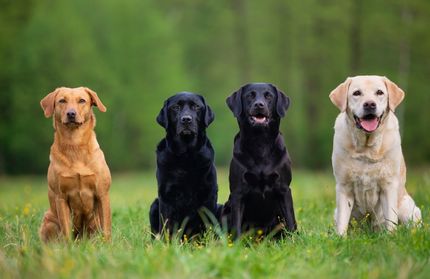Facts & Origin
Origin and history of the Shiba Inu
As one of the oldest and at the same time most widespread dog breeds in Japan, the Shiba Inu looks back on an impressive history. His ancestors came to the islands of the Japanese archipelago with immigrants around 7000 BC. There they originally served to hunt small game and birds, which explains their robust and independent nature.
However, the early years of the 20th century presented a challenge for the Shiba Inu, as there was a significant decline in the population. However, thanks to consistent breeding efforts and the introduction of a breed standard in 1934, under the auspices of the Japanese Kennel Club, this trend was reversed.
At that time, three Shiba types were distinguished, named after their regions of origin: The Shinshu Sh iba from Nagano Prefecture, the Mino Shiba from Gifu Prefecture, and the Sanin Shiba from Tottori and Shimane Prefectures. After the breed standard was established, the Shiba Inu was declared a "natural monument" in 1937 and has continued to be bred ever since, culminating in the breed we know today.
The origin of the name "Shiba Inu" is complex and not clear. One possibility is that the name is derived from "Shiba-Aka," a term that compares the warm brown-red hue of the coat to the fall coloring of leaves. Alternatively, "Shiba" - an outdated word for "small" - could refer to the dog's size. A third theory relates to the dogs' hunting use in the undergrowth, as "Shiba" can also mean "undergrowth." The addition of "Inu" or "Ken" simply means "dog".
Suitability and keeping of the Shiba Inu
The Shiba Inu has established itself as a reliable family and companion dog. Despite his independent and sometimes stubborn nature, he is very loyal and devoted to his people. His alertness and strong protective instincts make him an excellent watchdog.
Unlike many other dog breeds, however, the Shiba Inu often shows little interest in dog sports. His intelligence and strong will require consistent but loving training.
Comparisons and confusions
The Shiba Inu is often confused with the Akita Inu. Both breeds originated in Japan and have some similarity, however the Akita Inu is much larger. Because of this size difference, the Shiba Inu is sometimes mistakenly referred to as the "Mini Akita".
Another common comparison drawn because of the characteristic coat color and pointed ears is to a fox. This comparison is especially made with the fluffier specimens of the breed and those with red fur.
Interesting facts about the Shiba Inu
The Shiba Inu gained worldwide notoriety in 2013 through the "Doge meme" and has since made its way into the world of cryptocurrencies, including Dogecoin and Shiba Token (SHIB). As an archaic breed, it also has a particular genetic proximity to the wolf, which only adds to its fascination and popularity.
The Shiba Inu is thus a dog breed with a rich history and unique characteristics that make it a fascinating companion for the right person or family. His independence, loyalty and distinctive appearance have made him one of the most popular dogs not only in his native Japan, but worldwide.
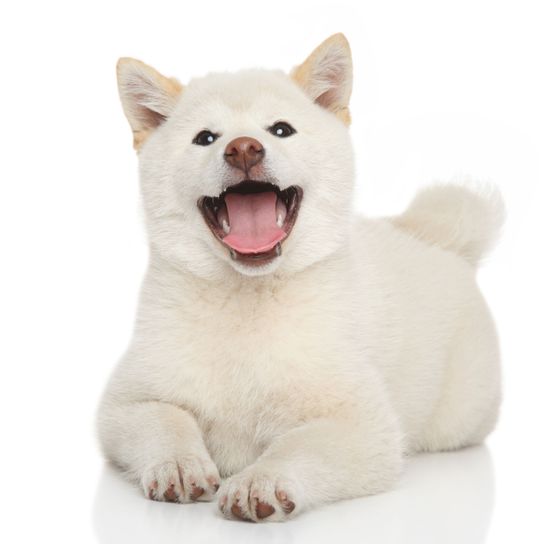
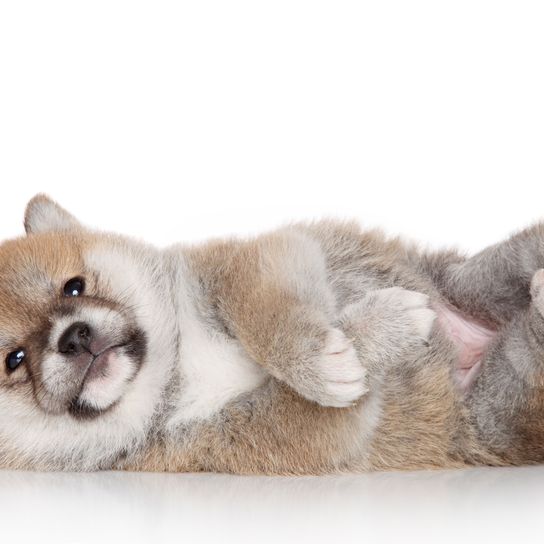
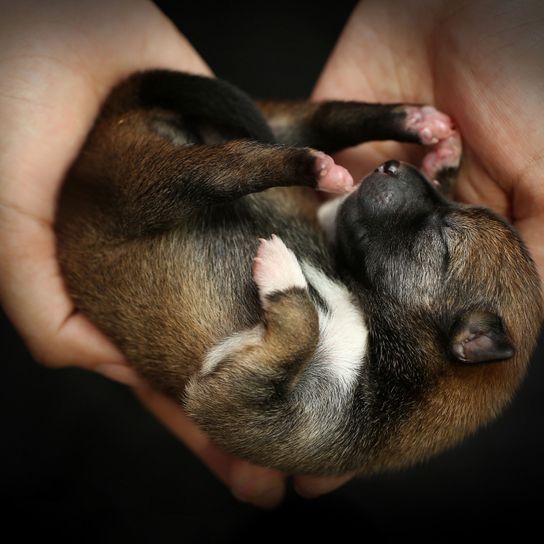
| Alternate Name | Shiba |
| Origin | Japan |
| Life expectancy | 12 - 15 years |
| Care requirements | low-maintenance |
| Activity level | average |
| FCI group | Asian Spitz and related breeds |
| AKC group | non-sporting group |
| KC group | utility group |
Shiba Inu mixes
Attitude, character and temperament of the breed
Character and temperament of the Shiba Inu
The Shiba Inu is a breed that stands out for its loyalty, astuteness and alertness. In his family he often shows himself very affectionate and loves the closeness to his caregivers. Towards strangers, on the other hand, he can be reserved and suspicious, which makes him a reliable watchdog. It is important to note, however, that the Shiba Inu is not an overly barky dog. He usually only barks when he perceives danger or feels threatened.
A characteristic trait of the Shiba Inu is his strong hunting instinct, which stems from his historical use as a hunting dog. This trait, coupled with its strong independence and self-reliance, makes it a dog that requires consistent and patient training. A Shiba Inu that is well trained and exercised is a pleasant and balanced companion.
Exercise and workout
Although the Shiba Inu is not necessarily known as an enthusiastic participant in dog sports or an avid ball hog, he does need plenty of exercise. He is a sturdy and enduring dog who enjoys working out on extended walks or jogs. At the same time, he is quite insensitive to weather conditions and likes to accompany his owners in almost any weather.
However, there is one important exception when temperatures are high. Due to its dense coat, the Shiba Inu is prone to overheating and should be protected from direct sunlight in hot weather.
Overall, the Shiba Inu is a loyal and alert companion whose independence and strong hunting instincts make it a challenge, but also an asset to the right owner.
Dog training with the Shiba Inu
An intelligent and independent nature is found in the Shiba Inu, which requires a special approach to dog training. However, through patience, consistency and an understanding of its idiosyncrasies, successful training can be designed.
Understanding of the breed: At the outset, understanding and acceptance of the Shiba Inu's character traits should be emphasized. Due to its independence and strong hunting instinct, training can be experienced as challenging. Therefore, patience and empathy should be incorporated into the preparation for training.
- Early Training: Training should be started early, if possible, to teach the Shiba Inu the basics of training and to build a good bond between the dog and its owner. Socialization and teaching basic commands can be started as early as puppyhood.
- Positive Reinforcement: An essential aspect of training is the use of positive reinforcement. It is found that Shiba Inus usually respond well to rewards such as treats, praise or petting. Care should be taken to reward desired behavior immediately so that the connection between the dog's behavior and the reward can be made.
- Consistency and patience in training: the consistency and patience of the trainer are often considered critical factors in training with the Shiba Inu. Due to their independent nature, instructions may not be followed immediately. In these cases, patience is required and consistency should be maintained in demanding the desired behavior.
- Socialization: Socialization of the Shiba Inu should be done early and continuously. Contact with other dogs, people and different environments will help develop the dog's adaptability and social behavior.
- Occupation and exercise: adequate physical and mental exercise should be provided to prevent problem behavior. In addition to regular walks and playtime, training tricks and commands can also help keep the Shiba Inu mentally challenged.
- Professional Assistance: If difficulties arise with training, it may be helpful to seek professional assistance. Dog trainers or dog schools with experience working with Shiba Inus can provide valuable support and guidance.
When working with the Shiba Inu, it is important to remember that each dog is an individual and has its own personality and preferences. Therefore, training should always be adapted to the individual dog. With patience, consistency and understanding, training a Shiba Inu can become an enriching experience for both parties.
Character
Usage
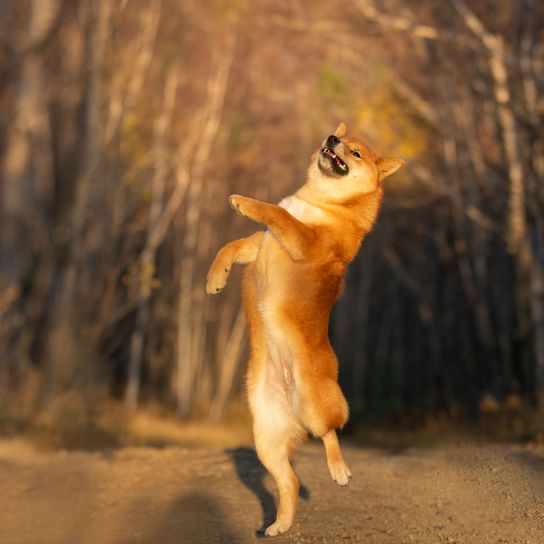
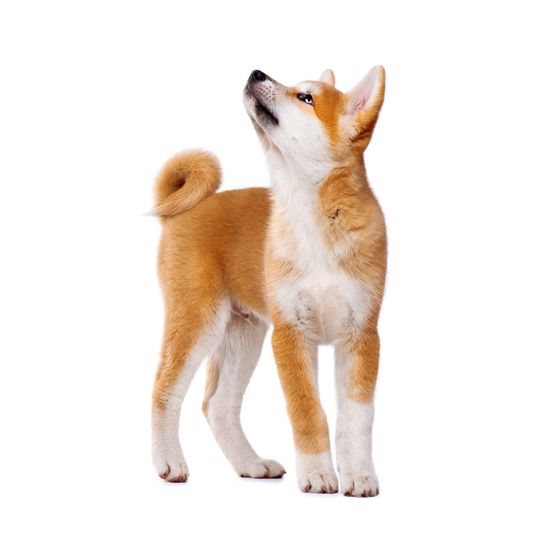
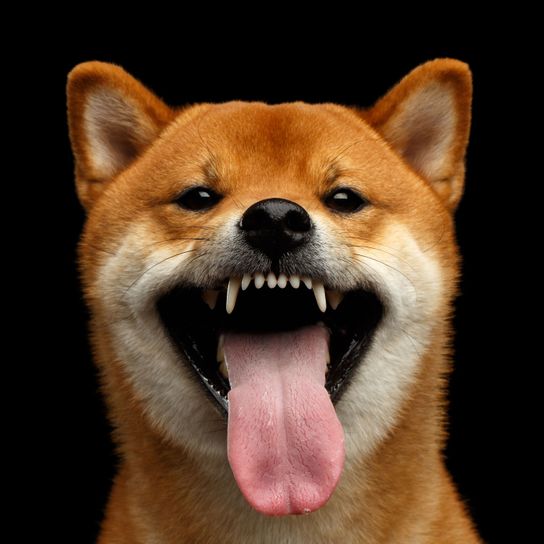
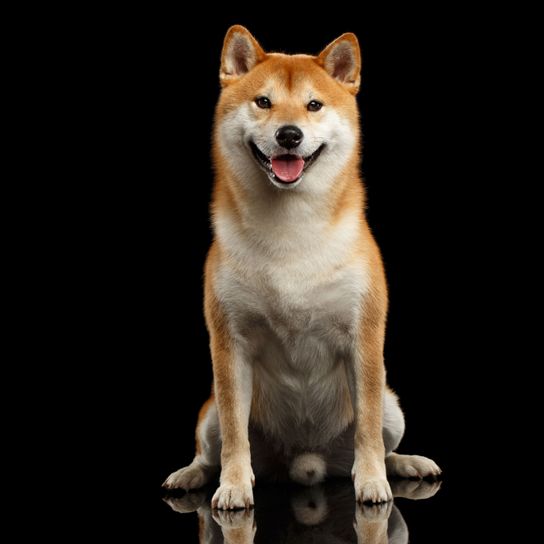
Health and Breeding of the Shiba Inu
Despite its hardiness, there are some health concerns to watch out for when caring for a Shiba Inu. Potential health problems include glaucoma, cataracts, progressive retinal atrophy, and gangliosidosis, also known as Norman Landing disease. Many Shibas also exhibit physiologic microcytosis, a condition in which red blood cells are smaller than normal. Despite these potential health problems, it is not uncommon for a Shiba Inu to have a life expectancy of 13 to 15 years.
Breeding the Shiba Inu requires special knowledge and resources. A Shiba Inu puppy can cost around 1500 Euros, and there are many resources available to learn more about breeding this breed. Websites such as ShibaClub.com and Rassehundeclub provide extensive information on breeding. It is important to note that Shibas imported to Europe from the United States are often larger and more muscular than those bred in Japan and Europe. Therefore, breeders should consider the respective breeding guidelines.
Care of the Shiba Inu
Grooming a Shiba Inu is relatively straightforward due to its short, dense coat. Regular brushing helps remove dead hair and keeps the dog's coat clean and healthy. During seasonal coat changes, which typically occur twice a year, the Shiba Inu sheds more hair and may require more frequent brushing. Otherwise, no special grooming procedures are required. However, it is important to ensure regular veterinary examinations and vaccinations to maintain the overall health of the Shiba Inu.

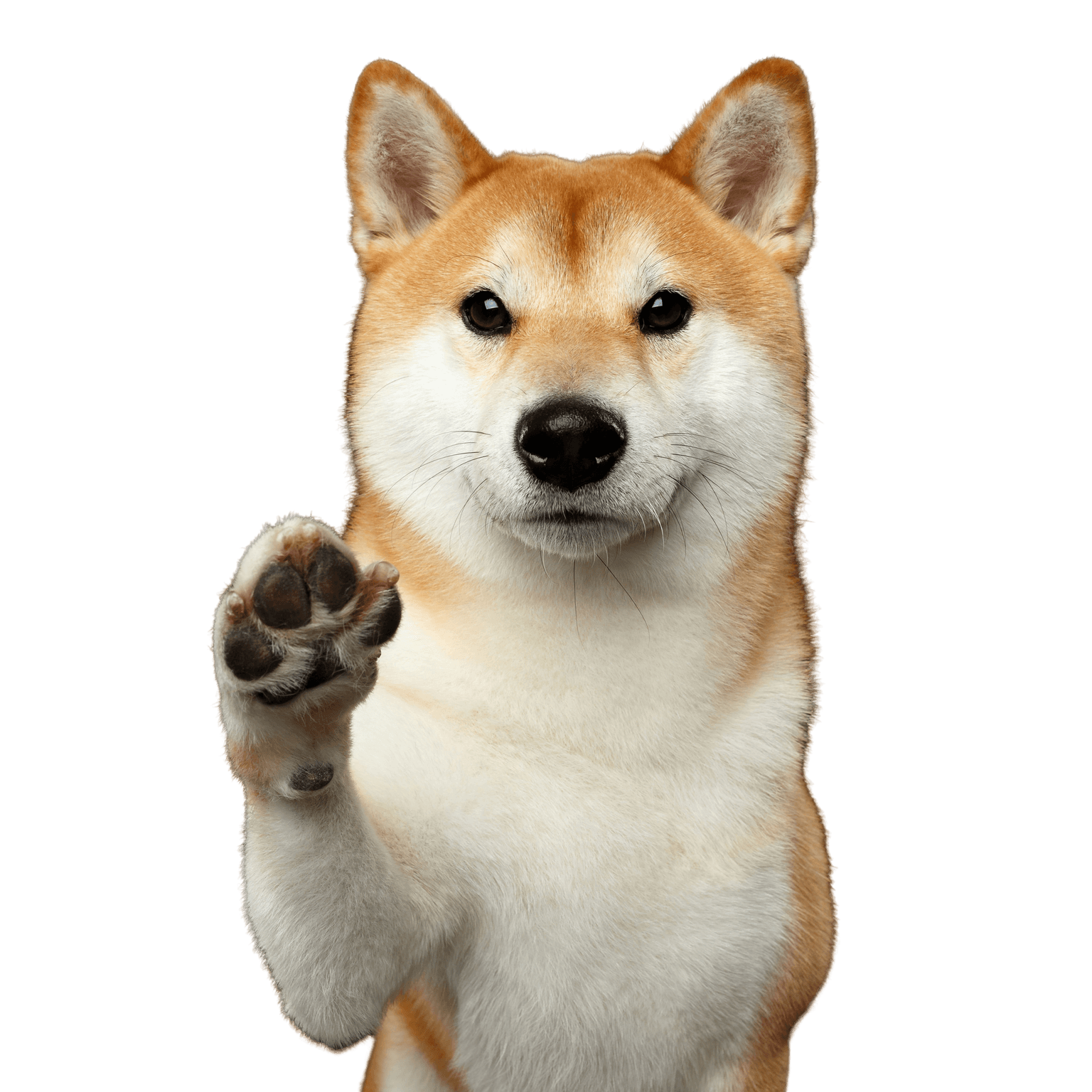
Shiba Inu: A unique quadruped with special breed characteristics.
The Shiba Inu, originally from Japan, is a breed known for its distinctive style and strong character. These dogs are classified in FCI Group 5 (Spitz and primitive type dogs), Section 5 (Asian Spitz and related breeds). Their appearance, coupled with their remarkable intelligence, makes them a unique breed that is highly appreciated by many dog lovers.
Elegance and strength: the size and weight of the Shiba Inu.
In terms of size and weight, the Shiba Inu combines elegance with strength. The males reach a height of about 40 centimeters, while the females are usually three to five centimeters smaller. With a weight of 9 to 13 kilograms, the Shiba presents itself as a compact, yet robustly built dog. His gait is nimble and industrious, giving him a fox-like appearance.
An expression of character: The head of the Shiba Inu
The head of the Shiba Inu is characteristic of the breed. The broad forehead has a distinct stop and leads to a straight nasal bridge that ends in a black nasal sponge. The muzzle is moderately thick with tight lips and a scissor bite. The well-developed cheeks give the Shiba Inu's face an expressive character.
Fascinating details: Eyes and ears of the Shiba Inu
The eyes and ears of the Shiba Inu are other notable features. The triangular eyes are not too small, of dark brown color and the outer corner of the eye is slightly raised. The prick ears, also triangular, are relatively small and slightly tilted forward. This gives the Shiba Inu an alert and intelligent appearance.
The powerful structure: The torso of the Shiba Inu
The Shiba Inu is characterized by a powerful build. A broad, strong neck leads to an equally strong, straight back. The loins are broad and muscular, the chest deep. The lower profile line of the Shiba Inu is slightly tucked up, giving it a sporty appearance.
A distinctive feature: The tail of the Shiba Inu
A distinctive feature of the Shiba Inu is his high set, thick tail. It is carried either well curled or in a crescent position. When it hangs down, the tip reaches almost to the hock.
The versatility of the coat: colors and texture of the Shiba Inu coat
The coat of the Shiba Inu is varied in both color and texture. The top coat is harsh and straight, while the undercoat is soft and dense. Especially on the tail, the hair is somewhat longer and sticking out.
The color palette of the Shiba Inu is broad and includes red, black-tan, sesame, black-sesame and red-sesame. "Sesame" here describes the mixture of different colors. If another color is added to this designation, it is the base color and thus predominantly represented.
All Shiba colors must have "Urajiro". This means that the Shiba has whitish hair on the sides of the muzzle and cheeks, under the muzzle, on the throat, chest and belly, on the underside of the tail and on the inside of the limbs.
A look at the limbs of the Shiba Inu
The limbs of the Shiba Inu are designed to support its robust, yet agile build. The front limbs are straight and the elbow is close to the body. The pastern has a slight slope. On the hindquarters, the lower leg is relatively short but well developed and the hock is thick and robust. Both the front and hind feet should have closely knit toes that are well arched and have thick, resilient pads. The Shiba Inu's claws should be hard and preferably dark in color.
Summary
In summary, the Shiba Inu is characterized by a number of notable and unique features. The characteristic head shape, distinctive tail, and variety of coat colors and textures make the Shiba Inu a fascinating and unique breed, unparalleled in the dog world. Its size and weight are accompanied by a nimble and industrious gait, characterizing it as a robust yet elegant dog. Whether already proudly calling a Shiba Inu a member of the family or considering taking one in, will surely be fascinated by its beauty and unique character.
| Fur length | medium |
| Fur | - |
| Ear shape | Standing Ears |
| Tail | rolled up |
| Anatomy | rugged, hefty |
| Size ♀ | 33 - 41 cm |
| Weight ♀ | 6 - 9 kg |
| Size ♂ | 35 - 43 cm |
| Weight ♂ | 8 - 11 kg |
| Suitable For | Seniors |
Colors
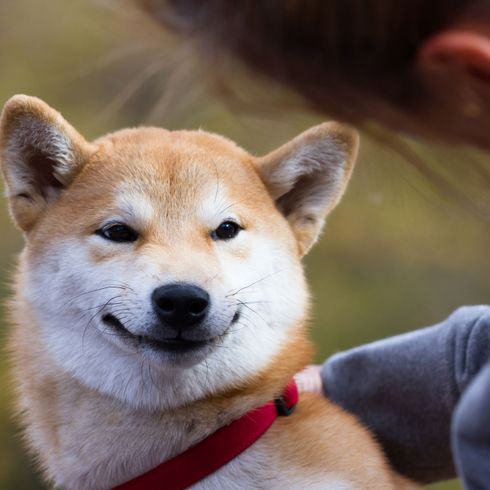
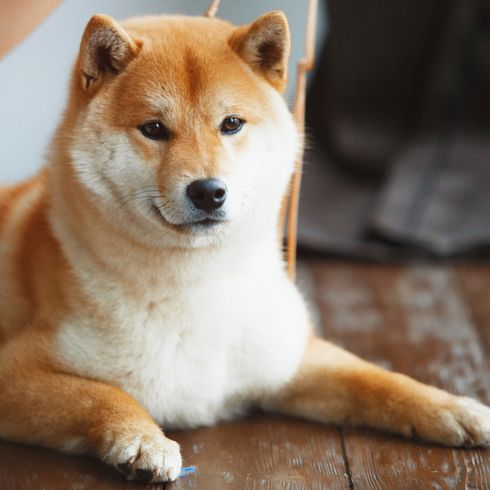
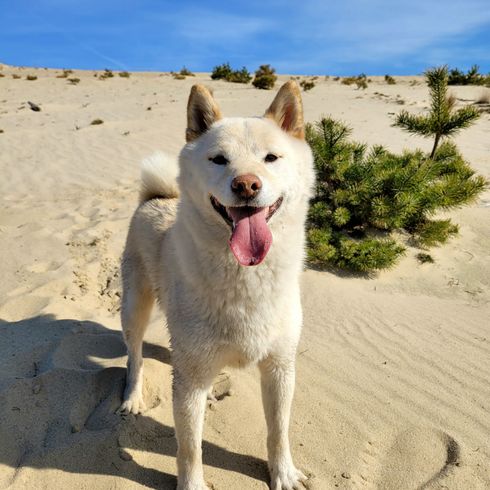
FAQ
-
A Shiba costs about 2500 Euro. Mixed breeds are much cheaper, but a purebred dog from a good and serious breeding costs money.
-
Yes, in principle the Shiba can be kept as a family dog or companion dog. However, the Shiba Inu does not necessarily need many people around him.
-
A puppy should get about 100 grams of dry food a day. Ask your breeder for the exact ration.
-
A Shiba needs average exercise and is satisfied if you walk or run with him for 2 hours a day. Additionally, like many other dog breeds, he needs mental exercise. This includes intelligence toys for home or search games indoors and outdoors.
-
The Shiba Inu is the most common dog breed in Japan.
-
Yes, the Shiba Inu is an excellent family dog.
-
The Shiba Inu is often described as fox-like.
-
As a color sign, Urajiro means that the dog has whitish hair on the sides of the muzzle and cheeks, under the muzzle, on the throat, chest and belly, on the underside of the tail and on the inside of the limbs.







